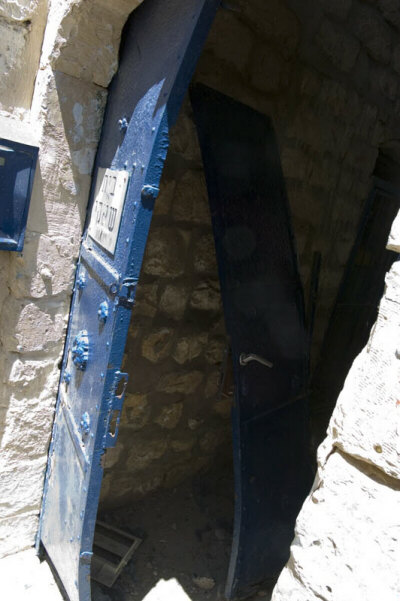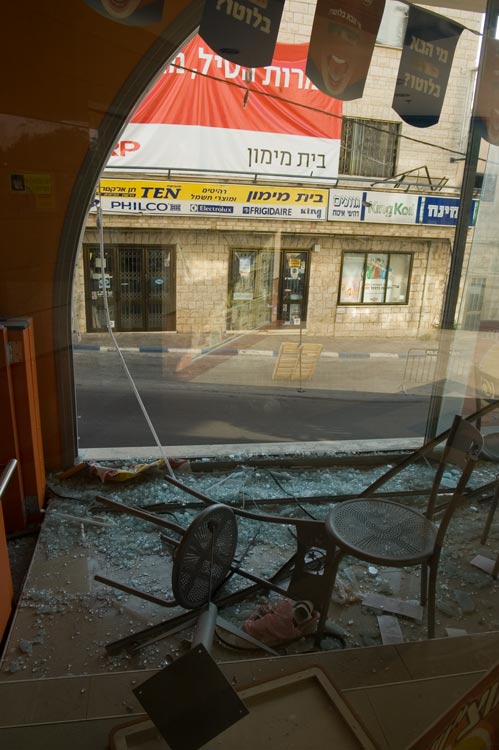 The guns, for now, are silent. Whether the cease fire currently in place in South Lebanon will hold — the only sure prediction is that there is no sure prediction. But for now, the North of Israel and the South of Lebanon are relatively peaceful places, and populations on both sides of the border are returning to their homes. What they find, of course, varies from the devastated to the unscathed. Katyushas in particular are famously inaccurate; they cause their damage not by pinpointing targets, as the Israeli airstrikes do, but by covering an area with showers of deadly rain. They are a swarm of ants, not a scorpion.
The guns, for now, are silent. Whether the cease fire currently in place in South Lebanon will hold — the only sure prediction is that there is no sure prediction. But for now, the North of Israel and the South of Lebanon are relatively peaceful places, and populations on both sides of the border are returning to their homes. What they find, of course, varies from the devastated to the unscathed. Katyushas in particular are famously inaccurate; they cause their damage not by pinpointing targets, as the Israeli airstrikes do, but by covering an area with showers of deadly rain. They are a swarm of ants, not a scorpion.
On the Israeli side, the numbers are being totaled up: 3,790 rockets, 901 of which landed in towns or cities. 42 civilians died, 4,762 treated in hospitals for injuries. On the Lebanese side, numbers are less clear, but Israel says it conducted over 15,500 sorties by air, and fired 2,500 times from the sea. Of course — I say “of course” even though the mainstream media never seems to mention it — Israel targeted military sites, or suspected military hideouts that used civilian areas for cover. Hezbollah lobbed its rockets over the fence, aiming not for army bases but, deliberately, for towns and villages with no military presence whatsoever.
Eliyahu (Andy) Alpern is a friend of mine and a talented photographer whose images have appeared in this magazine many times before — including on last month’s cover. He’s known for his panoramas of Israeli shuks, deserts, towns, and holy sites. He’s also a peace activist, working with the Sulha project and other initiatives. And he has a gallery in Tsfat.
Tsfat (Safed in Arabic) is a beloved city to those who study Kabbalah, as it is the birthplace of some of the literature’s most profound teachers and ideas. Today Tsfat is both a perpetually-in-renovation old city, whose atmosphere is still saturated with mysticism, and a sprawling new city, indistinguishable from many others in Israel. Tsfat is one of the four holy cities according to Jewish lore: the others are Jerusalem, Hebron, and Tiberias. Each city has a different element: Jerusalem is fire because of the Temple, Hebron earth because of the Cave of Machpelah, Tiberias is water because of the sea on which it sits — and Tsfat, nestled high in the mountains, is air. This month, the air brought death.
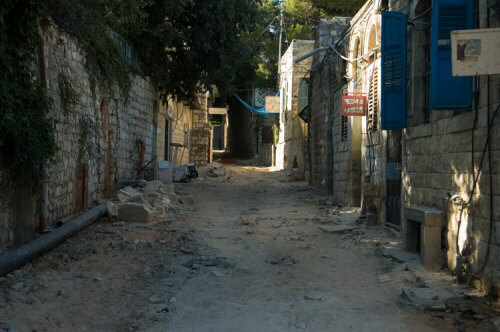
These photos reflect the type of damage that Katyushas generally wreak: not wholesale devastation, but random showers of maiming. Only a few buildings are destroyed by Katyushas — much of the mess in these images is indistinguishable from the usual Tsfat stew of renovation, destruction, and seemingly perpetual disorder. It was a relief, at first, to see that the city survived more or less intact.
Until you look closer. Then you see that the shrapnel exploding from Katyushas causes the death of a hundred blows, scattering into phones, windows, and people. These are weapons designed to inflict misery.
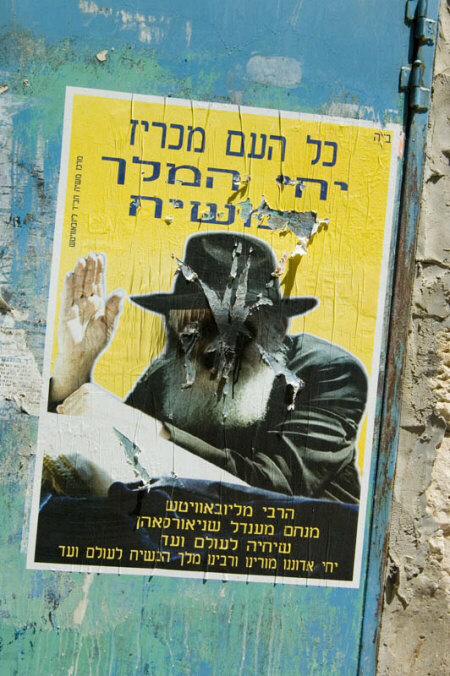
====

Tsfat can seem like an unreal place — airy, just like its familiar element. So, in amongst the devastation, it’s not surprising that there were those who reported miracles. One of those is pictured here. A katyusha exploded near the home of Avraham Lowenthal, a talented Tsfat artist whose work draws on themes of the Kabbalah. I was at Avraham’s house and studio a few months ago; he gave a talk to a group of visiting students in the middle of a driving rainstorm. As you can see above, the shrapnel shattered glass and damaged Avraham’s house. But as you can see below, a glass sculpture depicting the blasts of the shofar on Rosh Hashanah, which had been leaning against the shattered window, was totally unharmed. (As it happens, I had thought of buying the piece when I saw it a few months ago, but decided it was too expensive.)
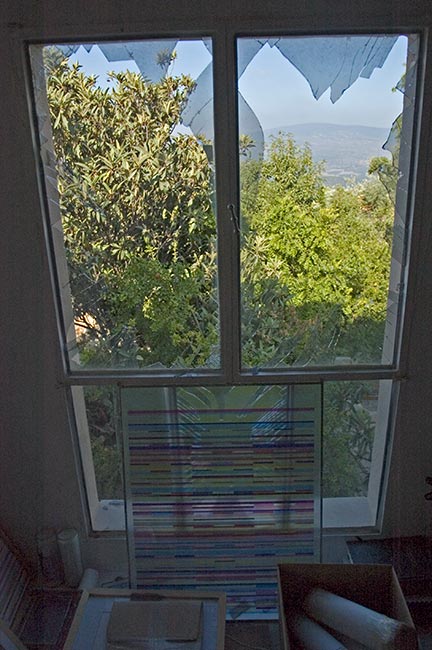
Not every place was so lucky. Below is Midreshet Tzofnat, heavily damaged in the shelling.

Warning: next page contains graphic images.
====
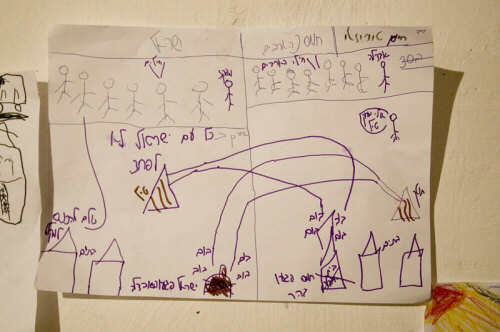
Above is one child’s view of the conflict, in a drawing Eliyahu saw in a bomb shelter. “The Arabs” are on the right; Israel on the left. “Boom boom boom” is the sound the missiles make when they hit houses.
And below is another child’s view of the conflict — Michal Mor’s. This is what katyusha shrapnel is meant to do: maim as many as possible. Just like it does to phones and posters, so it occasionally does to humans. There are scars from surgery on her abdomen and head.
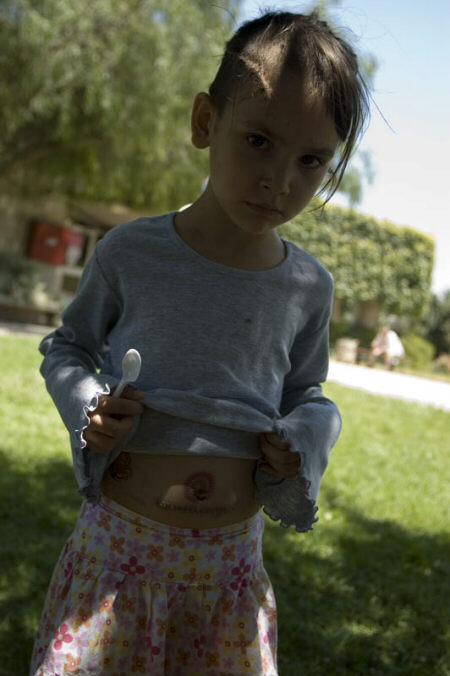
Then again, maybe Michal was lucky. She and the rest of her family was in the kitchen when the missile hit. Here’s what it did to her house:
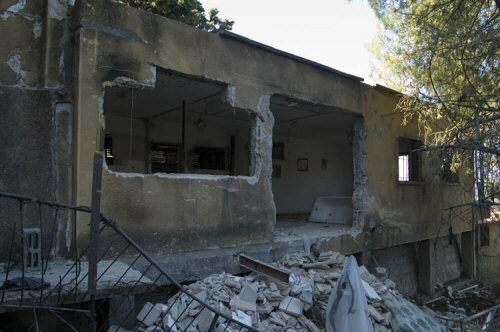
Tsfat, it seems, will recover. So will Kiryat Shmona, eventually. And so will Israel’s sense of itself. Eventually the tourists will come back, and walk in the footsteps of Isaac Luria — hopefully buying some Kabbalistic art along the way. In the meantime, for now, quiet is enough.
